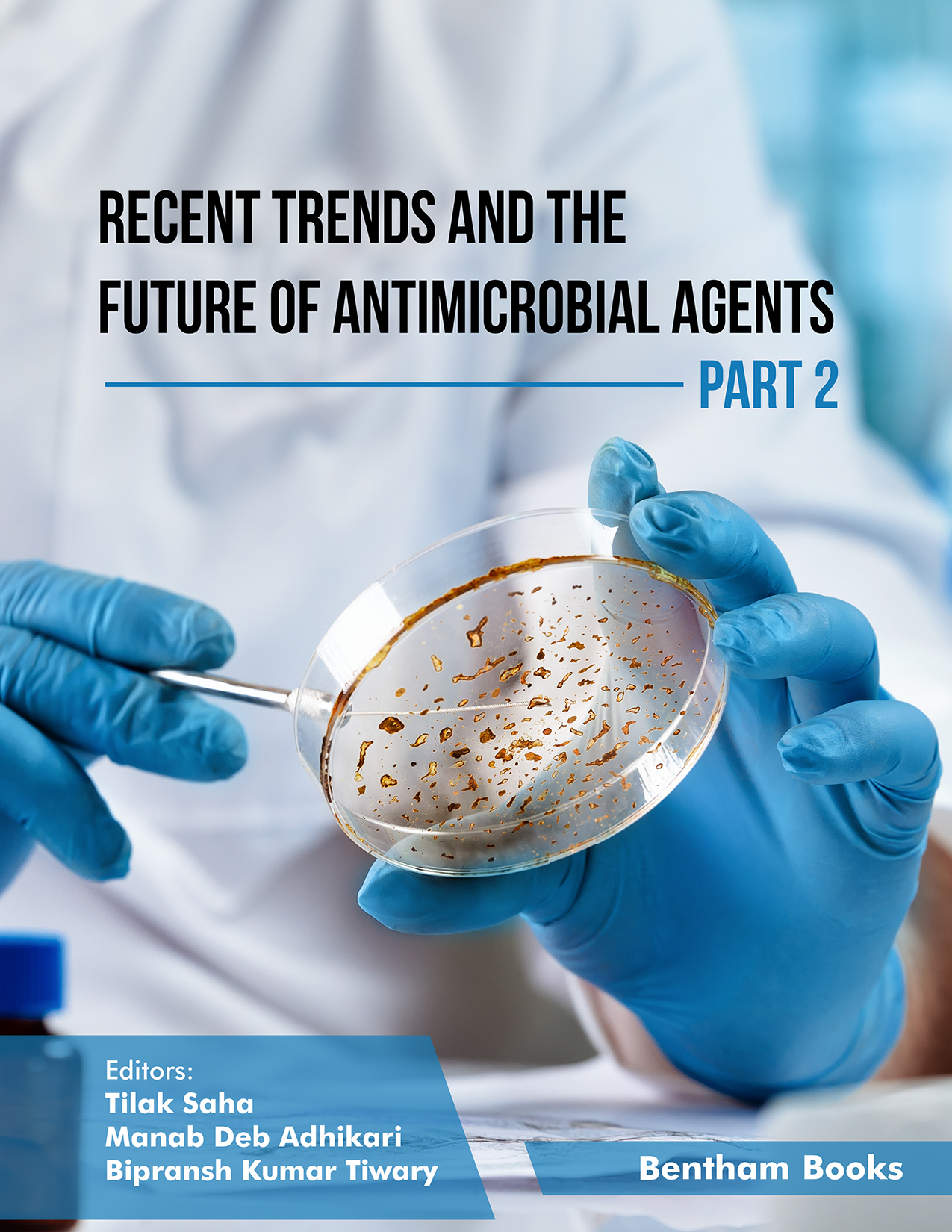Preface
Many microbial pathogens have evolved as drug resistant due to indiscriminate and injudicious use of drugs. This has compelled researchers to find novel antimicrobial agents with diverse chemical structures and novel mechanisms over the conventional antimicrobial agents rendering the pathogens with minimum scope to develop resistance. Last few decades have witnessed profound research on different areas for the development of alternative antimicrobial agents. These include novel chemically synthesized molecules, nanomaterials and probiotic/prebiotic mediated immunity boosters, etc. “Recent Trends and the Future of Antimicrobial Agents”, Part 2 is a continuation of the Part 1 of the same title that dealt with the naturally derived antimicrobial remedies/strategies. The present Part 2 of the same title deals with the chemically synthesized compounds, nanomaterials and probiotics.
The devastating pandemic caused by the severe acute respiratory syndrome-causing corona virus-2 (SARS CoV-2) virus has once again taught us that “Prevention is better than cure”. The overburden of xenobiotic drugs can be drastically reduced by boosting our immune system and fighting the disease causing microbes in association with the helpful bacteria and their metabolites. Three chapters of the book uncover the probiotic/prebiotic/antibacterial peptide compounds as novel antimicrobial approaches and disorder-management therapies. All of these “-biotics” are designed to modulate the gut microbiota in a way that improves health and reduces the need to gulp antibiotics indiscriminately and thus indirectly assist in fighting potential bacterial threats. But, prevention always may not be able to protect us from infiltrating microbes. Chemical synthesis enables researchers to develop target based prospective drug molecules to fight against ever-changing microorganisms. The potent synthetic pathways are discussed in a chapter. The plant-based products have traditionally been used as natural healing systems. Although, modern scientific approaches focus on active compounds. Bioactive natural compounds and synthetic drug candidates are promising therapeutic agents for human health and disease management. Their therapeutic efficacy can be enhanced if their bioavailability is raised to the optimum level and/or delivered to the target cells/tissue involving nanocarriers. The membrane targeting bactericidal agents are also emerging as potent antimicrobials since developing resistance against them demands extensive restoration of membrane compounds, which is a conceivably formidable challenge for the bacteria. In this regard, membrane-targeting nanoscale materials, amphiphiles, and antimicrobial peptides bear special merit. Two chapters discuss the potential of cationic amphiphiles as promising antimicrobial entities and amphiphilic nanocarriers as delivery vehicles. Another chapter discusses the design, synthesis and antimicrobial applications of Metal-Organic Frameworks (MOFs). Thus, amphiphiles of this new genre have enough potential to deliver several antibacterial molecules in years to come. The emergence of nanoscience and technology in recent years offers great promise in therapeutics. Nanomaterials are emerging as a novel class of antimicrobial agents to overcome the challenges faced by conventional antimicrobials. Using nanomaterials as bactericidal agents represents a novel approach to antibacterial therapeutics. Three chapters of this book cover the recent development, antimicrobial prospects of biogenic metal or metalloid nanoparticles, bactericidal QDs and MoS2 based antibacterial nanocomposites. A new-age approach to combat microbes, antimicrobial photodynamic therapy (aPDT), is discussed in a chapter. PDT uses a nontoxic and lightsensitive dye, a photosensitizer (PS), in combination with nontoxic visible light of the appropriate wavelength to excite the PS and oxygen that can selectively control bacterial infections by the generation of highly cytotoxic reactive oxygen species (ROS).
In the process of editing the book we have received needful assistance and inspiration from different spheres of academy. We express our sincere gratitude to Prof. (Dr.) Dhrubajyoti Chattopadhyay, Vice Chancellor, Sister Nivedita University, Kolkata, West Bengal for his motivation throughout the project. We express our gratitude to the Vice Chancellor, University of North Bengal, Darjeeling, for all necessary facilities and support. We are thankful to Fr. (Dr.) Lalit P. Tirkey, Principal, North Bengal St. Xavier’s College (NBSXC), Jalpaiguri, for his continuous encouragement. Our sincere thanks go to all authors for their hard work and professionalism in making this book a reality. Their expertise in the contributed chapters is acknowledged and appreciated. Finally, we appreciate Bentham Science Publishers for their assistance and constant support in publishing the book.
Tilak Saha
Immunology and Microbiology Laboratory
Department of Zoology,
University of North Bengal
Darjeeling, West Bengal
India
Manab Deb Adhikari
Department of Biotechnology
University of North Bengal
Darjeeling, West Bengal
India
&
Bipransh Kumar Tiwary
Department of Microbiology
North Bengal St. Xavier’s College
Rajganj, Jalpaiguri, West Bengal
India

